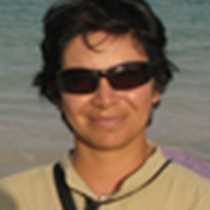This morning, we landed on North Seymour Island, located in the central realm of the archipelago. We started to explore the trail along the coast and the interior of the island, where we found several species of plants and animals that are only found here in Galapagos, and nowhere else in the world. This island is also the home to the Galapagos land iguanas, and we found several females and some juveniles trying to feed on the little green vegetation that can be found here. At this time of the year, the trees look naked as there is no rain. Only certain drought resistant vegetation can be found, and these species help the land iguanas to survive until the rains return to the islands.
One of the most interesting aspects of this island is the number of sea bird colonies. This morning we found great and magnificent frigatebirds, blue-footed boobies, swallow-tailed gulls, and Galapagos shear-waters, amongst others. In the case of magnificent frigatebirds, we saw several males with their gular sacs fully inflated, making loud noises to get the attention of the flying females. The juvenile great frigatebirds are also growing up, and most were waiting for their parents to return with food. Along the trail there were several males blue-footed boobies trying to get a mate by whistling and showing off their magnificent blue feet.
We returned to our ship after exploring North Seymour and began our navigation to Rabida Island. Once we arrived, some of our guests went out on our glass-bottom boat, while others went snorkeling from the Zodiacs along the bright red cliffs of this island. We had great visibility today, and we found large schools of razor surgeonfish, several blue-chin parrotfish, king angelfish, yellow-tailed grunts and also some green sea turtles.
This was a wonderful beginning to our expedition in Galapagos.







